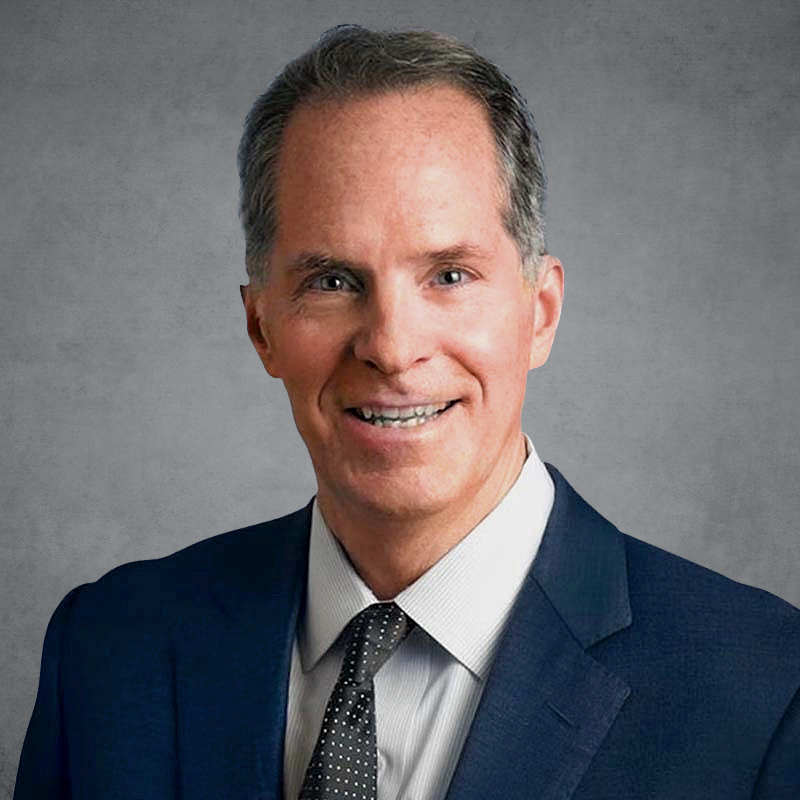The New DNA of Business: How AI is Rewiring the Enterprise


Executive Perspectives
Artificial Intelligence (AI) is no longer an experimental capability sitting on the fringe of operations; it’s becoming the engine room for how successful, modern businesses grow, serve, and innovate. Just as the internet redefined connectivity and cloud computing reshaped scalability, AI is ushering in a new era where intelligence itself becomes embedded into every business function. What was once considered futuristic is now foundational: AI is helping companies understand demand before it emerges, personalize experiences in real time, and automate decisions with unprecedented speed and accuracy.
This is not another digital transformation. It’s a structural shift, one where AI becomes the operating system of the enterprise, influencing everything from product design to go-to-market execution to how leaders lead. For executive teams, this represents a fundamental shift. AI strategy can no longer live in innovation labs or tech roadmaps. It must be embedded in the core of how the business operates, impacting product, operations, talent, and culture.
Over the past two decades, I’ve helped establish and scale revenue growth engines at Google, LinkedIn, and Nextdoor, leading sales and marketing organizations, launching new products, transforming business models, building and scaling revenue streams, and helping take a company public. At every stage, the challenge was the same: translate potential into business results. While technology was always at the heart of transformative strategies, what’s different now is how deeply AI reaches into the fabric of a business. Not a department. Not a tool. A new foundation.
This piece shares principles for building what I believe is the next enterprise operating system. These aren’t trends. They’re field-tested lessons from leaders already putting AI to work – and a blueprint for those ready to lead from the inside out.
AI AS A HUMAN AMPLIFIER
AI doesn’t replace people – it elevates them. Most technologies increase efficiency. AI expands intelligence. It augments human judgment, enhances creativity, and unlocks insights that were previously invisible in data.
At Walmart, where some stores cover over 4.5 acres, AI helps associates search for products, restock shelves, and answer customer questions. These systems shift focus from repetitive tasks to more meaningful ones. Employees are supported in showing up where they’re needed most.
Delta uses AI in its operations control towers to help dispatchers rebook passengers and communicate during flight disruptions. McDonald’s has deployed AI voice assistants in drive-thrus to keep service moving smoothly, while employees stay focused on hospitality.
In working with C-Suite leaders across a range of industries I’m increasingly seeing adoption of AI-powered analytics tools to process vast amounts of data – market trends, financial reports, customer behavior, operational metrics – far beyond human capacity. This allows leaders to more easily identify crucial patterns and correlations to inform strategic decisions.
For leaders, the real opportunity is strategic focus. AI lets you subtract the checklists, reduce time spent on intense research and data-mining, and better connect customers to value, enabling you to double down on the edge only humans have: navigating ambiguity, insight, judgment, and creativity. That’s what top teams are optimizing for now: not just throughput, but clarity. They’re redesigning roles, rituals, and reviews to create more surface area for critical thinking, not just task completion.
AI AS A GROWTH ENGINE
AI unlocks new ways for businesses to drive revenue, increase efficiency, personalize customer experiences, and scale innovation faster than ever before. When business leaders strategically use AI to focus on their core business and what truly matters most for their success and growth, conditions for growth are set.
A core growth driver for Amazon is their recommendation engine, which today is powered by AI, helping Amazon better personalize product suggestions for customers and driving sales. AI also optimizes Amazon’s inventory management and enhances the efficiency of their fulfillment centers. Amazon is increasingly becoming a platform built on AI and it’s enabling them to drive new levels of growth.
Google applies AI across their portfolio of products and also across business functions. For example, Google’s Marketing group is heavily leveraging AI for campaign delivery and creative production. Nestlé, with its massive portfolio of over 2,000 brands, uses AI to model demand and reduce waste. PepsiCo refines packaging and logistics with predictive models that serve both efficiency and sustainability goals. PayPal is powering the future with AI-integrated commerce. Merchants can now plug PayPal into agent frameworks, enabling consumers to pay, track, manage, and shop – all through AI assistants. Unilever taps social signals and AI co-creation platforms to generate product concepts that resonate with real-time consumer sentiment. Sephora blends AI-powered product recommendations with virtual try-ons, improving conversions and creating stickier customer experiences.
These aren’t scattered experiments. They’re deliberate bets, placed where AI can make a measurable difference. The core advantage isn’t speed. It’s responsiveness. AI sharpens your ability to sense what’s working and act immediately. Growth flows from tighter loops between signal and decision, insight and execution.
For business leaders, the core question is: where is the margin for improvement wide, the stakes high, and the opportunity persistent? That’s where to start.

In the age of AI, most companies don’t need to reinvent who they are. They need to reimagine how they execute.
- Heidi Andersen | Senior Managing Director
AI WILL TRANSFORM CAPACITY TO BRING STRATEGY TO LIFE
In the age of AI, most companies don’t need to reinvent who they are. They need to reimagine how they execute. The most iconic brands remain rooted in the same principles that built their reputation. What’s changing is their capacity to act on those principles; faster, smarter, and at scale.
Take Nike. Its commitment to performance and innovation hasn’t wavered. What’s evolved is how that commitment shows up: regional product assortments tailored by AI, personalized offers for members, and real-time demand forecasting that adapts to local signals. Innovation now lives in both the product and in the precision of the experience. Mercedes-Benz continues to define luxury and engineering excellence. But today, that luxury is adaptive. AI learns driver preferences to optimize cabin settings, recommend service timing, and enhance safety – all seamlessly, all in real time. Unilever is using AI to drive its sustainability and sourcing strategies, enabling dynamic adaptation across supply chains while staying true to its mission of responsible growth. McDonald’s uses AI to dynamically adjust drive-thru menus based on weather, time of day, and regional preferences, delivering on consistency while unlocking new responsiveness.
AI doesn’t replace the need for vision. It redefines how effectively and precisely that vision can be executed. The gap between strategy and action, also known as the “execution drag” that slows down transformation, is where AI delivers exponential return.
The new question for executive teams isn’t “What do we believe?”, it’s “How quickly and intelligently can we bring what we believe to life across every touchpoint?” Answering this question will allow business leaders to harness AI as a strategic multiplier that brings your core purpose to life in more powerful ways than ever before.
AI IS COLLAPSING THE GAP BETWEEN ATTENTION AND TRANSACTION – EXECUTIVES MUST RETHINK HOW COMMERCE WORKS
In a feed-driven world, the traditional boundaries between brand storytelling and sales channels are dissolving. AI is turning attention directly into action, and for business leaders, this marks a fundamental shift in the logic of commerce.
Take Walmart: its creator network, comprising over 40,000 influencers, dynamically matches content to real-time inventory. A customer inspired by a product on social media can make a purchase in a few taps, without ever leaving the moment. Amazon is enabling similar experiences with influencer storefronts and livestream shopping. Zara is using AI to track social style trends and match them to available inventory, allowing consumers to move from discovery to purchase in a single gesture.
This is not just better targeting. It’s a new operating model for commerce: fluid, personalized, and responsive to the customer’s context in real time.
But even more profound changes are on the horizon.
Consumers are beginning to move beyond the feed. Platforms like ChatGPT are emerging as intelligent commerce agents surfacing products, offering recommendations, and linking directly to purchase pathways, all within a single interface. When AI understands intent and context, it doesn’t just recommend, it acts. This shift may fundamentally reduce the need for traditional advertising spend, as discovery and transaction converge inside intelligent ecosystems.
For business leaders it isn’t just about tech, it’s about strategy, structure, and speed. Content becomes infrastructure. It’s no longer just a brand asset; it’s a real-time signal of demand and a trigger for conversion. The smartest organizations are no longer creating campaigns, they’re building the pipes that turn content into commerce instantly. Commerce becomes conversational. As AI-driven agents reshape how people discover and buy, businesses must be prepared to integrate across new endpoints, where the brand experience happens outside owned platforms and even outside traditional search and social. Data becomes dynamic. Every swipe, scroll, or query is a source of insight. AI allows companies to listen and respond at the speed of relevance, turning customer behavior into business action without the latency of traditional campaign cycles. Essentially what’s happening is a structural reset of how demand is generated and captured. The future of commerce isn’t just digital, it’s intelligent, agentic, and customer-led.
CREATIVITY ENHANCED, NOT REPLACED: THE NEW FRONTIER OF HUMAN-MACHINE PARTNERSHIP
In an era defined by intelligent automation, one truth is becoming clear: AI doesn’t eliminate the need for creativity, it amplifies it.
Artificial Intelligence can now generate text, images, video, and sound at scale. But what it can’t do is decide what matters. It doesn’t intuit tone, grasp cultural nuance, or feel the emotional undercurrent that separates forgettable content from enduring brand storytelling. That’s still the domain of human creativity, taste, and judgment.
At Google, creative teams are training AI models on their highest-performing campaigns, not to replace their instincts, but to give machines a better foundation from which to assist. The intent is not to automate taste, but to infuse generative tools with brand fluency and emotional intelligence. The machine may output ideas at scale, but people decide what resonates.
Heinz leaned into this dynamic brilliantly with its “AI Ketchup” campaign, prompting generative image tools to produce pictures of ketchup. Most of the outputs resembled Heinz without any prompting, a clever, self-validating proof of brand distinctiveness. AI didn’t create the brand; it reflected its cultural dominance in a new, meaningful way.
L’Oréal is another case in point. The company uses AI to assist with hyper-personalized shade matching of its beauty products. But the final decision remains grounded in human aesthetics and emotional intelligence. The machine speeds up the process, but it’s human discernment that earns trust and builds loyalty.
This moment requires a mindset shift at the top. Creativity is no longer a linear process. It’s a feedback loop between data and imagination and between AI-generated scale and human-crafted substance. The leaders investing wisely aren’t automating content creation, they’re redesigning creative workflows to bring more agility and artistry to the table. Marketing organizations must rethink their creative stacks not to remove people, but to free them to focus on what machines can’t replicate. CMOs and CIOs must work hand in hand, ensuring creative tooling is both technologically sound and culturally attuned. CEOs must ask: are we using AI to scale volume, or to scale what makes us distinct?
AI expands the canvas. It accelerates iteration, compresses production cycles, and introduces new ways to test and learn. But the brush? The brush still belongs to humans – those who understand tone, context, values, and the lived experience of the customer. The most iconic work of the next decade won’t be machine-made. It will be machine-augmented, human-approved, and emotionally resonant in ways only people can understand. This is not the end of creativity. It’s the beginning of something more powerful: creativity at the speed of culture – scaled by AI, steered by human insight.
A SHIFT AS BIG AS THE INTERNET: WHY AI IS REWIRING THE ENTERPRISE
We’re no longer talking about future potential, AI is already powering real results in high-performing companies. It’s optimizing pricing across thousands of stores in real time. It’s compressing marketing timelines from weeks to hours. It’s sensing and adapting to supply chain disruptions before they escalate. But the true differentiator isn’t just in deploying smart tools. It’s in building intelligent organizations.
The companies pulling ahead aren’t asking where AI fits, they’re asking how the business should change to fully harness it. They’re embedding AI across every function, from finance to product, from customer service to operations. They’re using AI not just for efficiency, but for strategic advantage – to detect demand earlier, serve customers more personally, and move at the speed of change.
For executive teams, this means AI can no longer live in pockets of experimentation. It must be embedded in the fabric of the enterprise shaping how value is created, how capabilities are scaled, and how leaders lead.
AI is the DNA of the modern enterprise. And the organizations that embrace this now won’t just be more efficient – they’ll be exponentially more adaptive, more customer-centric, and more future-ready.
The views and opinions expressed herein are solely those of the individual authors and do not necessarily represent those of The Consello Group. Consello is not responsible for and has not verified for accuracy any of the information contained herein. Any discussion of general market activity, industry or sector trends, or other broad-based economic, market, political or regulatory conditions should not be construed as research or advice and should not be relied upon. In addition, nothing in these materials constitutes a guarantee, projection or prediction of future events or results.
























